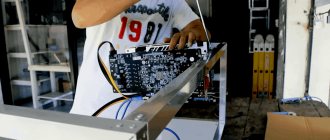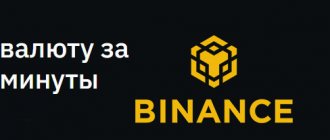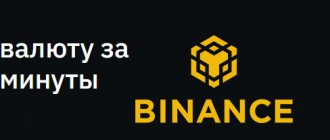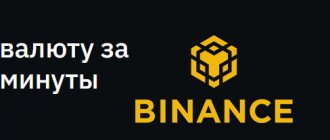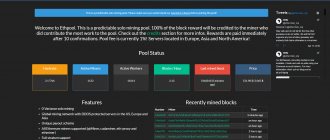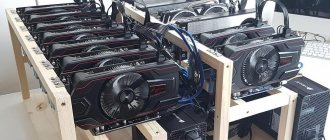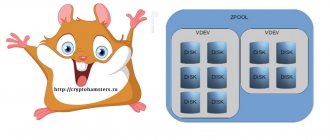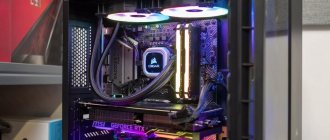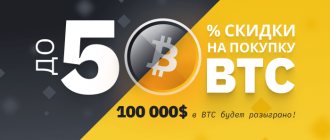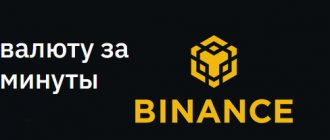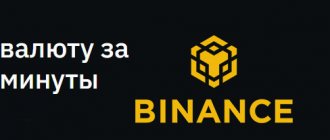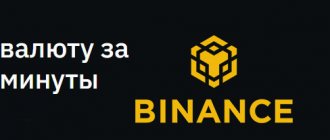What are mining pools
The operating algorithm of the Ethereum cryptocurrency provides for the payment of a reward for each successful hash used to sign a block of transactions. However, the great popularity of technology has led to the fact that the amount of equipment involved in hash calculations has grown significantly. With a high network hashrate, the probability of a small mining farm picking up hashes is low. You can work for more than a year before receiving your first Ether payment.
Mining pools provide hash selection using distributed computing among participants. After the pool receives a reward as a result of joint efforts, it is distributed among the miners who were engaged in mining. The number of coins received is proportional to the hashrate provided by the participant’s equipment.
In turn, the pool owners receive a reward in the form of a small commission. This mining method guarantees miners a stable income, regardless of whether they find the right hash or help others do it.
The ethermine.org pool has no fundamental differences from similar resources. It has a fairly low commission and stands out among competitors with its automatic withdrawal of earnings feature.
My bad experience
Quickly enough, I set everything up and started mining the coveted ether, and a few days later I received my reward of 0.005 ETH. But when I started to look into it, it turned out that it was broadcast, but only on the network, and in order to get it out of there, you must first change it to MATIC and then transfer it through the bridge to regular broadcast and only then sell it. Along with the ether, 0.001 MATIC from the pool also arrived in the wallet, as if to pay the exchange commission. Well, I think it’s great that everyone took care of me).
The screenshots were taken a little later, after my experiments, so the balance of MATIC is different, here I already received MATIC for free, imagine that instead of 0.004 it has MATIC 0.001.)
In general, I read several forums, watched several video tutorials and started changing coins. First of all, as everyone advised, I went to the debank.com website, connected my wallet, chose the network, chose what I wanted to change to.
Then I saw that the commission was 0.0033 MATIC and I only had 0.001.
By the way, when I first did this, the commission size was 0.0015
I started looking on the Internet where I could get MATIC for free. I spent a lot of time on this matter, everyone said that I needed to go to the stock exchange and buy.
To be honest, in order to withdraw such nonsense you also need to buy something.
And in one video, a guy talked about such a service that allows you to get 0.001 MATIC on your balance for free. You can only do this 2 times a day.
Here everything is quite simple: enter the wallet address, confirm that it is not working and click “SEND 0.001 MATIC TO MY ADDRESS”.
All 0.001 MATIC arrived on the wallet balance.
By the way, you can make an exchange in the Metamask wallet itself, but the commission in it is much higher.
As you can see, I’m already missing 0.060283 MATIC.
If you switch to another exchanger, which I also recommend, then the commission is 0.0087 MATIC.
In general, I received 0.001 MATIC for free twice using the above service. I paid the commission on the Debank.com website, but when I wanted to make an exchange, the service showed this.
It was not possible to make an exchange using Debank.com. Moreover, every day the size of the exchange commission is growing and the service that MATIC provides for free will not help.
Characteristics of Ehermine
On a pool with a total hashrate of 63.6 TH/s participants, there are almost 130 thousand active users who mine Ethereum, Ethereum Classic and Zcash on almost five hundred thousand workers.
The advantages of the resource include:
- anonymous mining;
- available server locations (Europe, USA, China);
- accurate hashrate reports;
- customizable minimum payout;
- detailed statistics on workers;
- low commission (1%);
- telegram bot and mobile applications for monitoring mining efficiency;
- notification by email about errors in balloons.
Etc ethermine org payments
Go to etc.ethermine.org and insert your wallet.
Click Check Status and see
Click Settings (red arrow), then where the blue arrow indicates when typing what amount to withdraw (minimum 0.1 etc). And where is the purple arrow, enter your IP address which we copied above to 2ip.ru.
All! I hope I answered the question ethermine how to withdraw money.
There are also other problems.
Ethermine invalid ip provided - here you will need to cut off the farm and wait until it turns red in the statistics. Then start mining again, find out your IP from the same farm or computer and after 15 minutes try to configure it again.
Source
How to start mining on Ethermine
Depending on what currency you are going to mine with your equipment, you need to select the appropriate menu item at the top of the page (Pools).
This will open the ethermine pool page, where you can see a table with the server address and port settings.
Selecting Zcash will open the Flypool page with similar data.
Below you will see links to download the miner program. The pool supports Claymore Miner, Ethminer and Phoenix Miner. You need to select the appropriate application depending on the manufacturer of the video card and the OS you are using (Ethminer only works with Windows).
Next, all that remains is to install the application, launch it and open the settings window and enter the values of the address, ports and user name (wallet address) into it.
You can work with the pool provided you have a modern video card with at least 3 gigabytes of RAM. This is necessary to process the Ethereum DUG file. But if you are just going to buy a mining video card, you need to buy models with 4 or more gigabytes of memory. This is due to the growing size of the file, which will soon exceed 3 gigabytes. As a result, all old GPUs with low video memory will become obsolete. They will continue to be used to mine Zcash, but not Ethereum.
Payment principles
The PPLNS (Pay Per Last N Shares) system is adopted as the basis for the operation of the Ethermine mining pool.
In this system, the distribution of rewards is made in accordance with how many balls each of the pool participants found, as well as the difficulty of mining at the current moment.
The minimum payout threshold in Ethermine is 0.5ETH. The maximum amount is 10ETH.
Each client determines the exact amount to be paid independently, depending on the capacities involved in the work, and therefore the timing of accumulation of the required amount. In the past, this option was not available and the pool automatically paid out what it earned over the past day to the specified wallet.
Users drew the attention of developers to the fact that the commission is often an amount greater than the payout, especially during periods of increased demand for the coin.
In addition, negative comments were also noted regarding the fact that there is no opportunity to work in crypto exchange accounts, where minimum thresholds for replenishing accounts are set and daily payments do not go through for replenishment for the vast majority of clients.
As a result, the reward system has been reviewed and edited for the convenience of customers.
This led to a partial outflow of miners, whose power produced a very small hashrate, which did not allow them to receive 0.5ETH in an adequate time frame.
With the entry of ASICs that support Ethereum mining into the market, difficulties increased many times over and a large number of small miners were forced to switch to other coins.
skip to content ^
Pool statistics
The site menu contains links to obtain information about the operation of the pool and statistics on how successfully participants found blocks. The hashrate statistics graph contains data for each of the mining servers (Asian, European and two American). Below you can see data on the number of blocks found for each day.
To get statistics on your account, you need to enter the wallet address in the window located at the top right of the site window and click the search symbol.
As a result, you will see the following data on the miner:
- wallet address;
- hashrate;
- unpaid balance;
- number of workers;
- ball statistics.
There are also production and profitability graphs. Clicking the Setting button will take you to the account settings page. Specify the email address to which notifications will be sent and the payment threshold (from 0.05 to 1 ETH).
Setting a minimum payment is useful if you want to withdraw money to an exchange account that has a minimum deposit limit. For example, with a limit of 0.1 ETH, a payment from the pool of 0.06 ETH to you will not be accepted by the exchange. Therefore, you need to enter the required value in the Payment threshold in Ether field.
Advantages and Disadvantages of EtherMine Pool
PROS:
- Anonymity. You do not need to leave any information about yourself in the pool, except your wallet. For those who take anonymity seriously, it is worth remembering that for complete incognito it is better to use a separate wallet not associated with crypto exchanges;
- Clear hashrate indicators allow you to correctly predict the performance of work:
- Automatic payments. Taking into account the volume of the minimum payment, this approach is very beneficial for the miner, and the ability to edit the amount to be paid in a wide range will satisfy the needs of most pool participants;
- Mail notification system. Keeps the miner informed about all changes in the account and payment information. Provided for in case of unauthorized authorizations;
- Competent and prompt technical support. Although real difficulties do not arise very often, the team quickly and easily helps to resolve all problems.
CONS:
- Lack of Russian language. In addition to possible incorrect interpretations of the description, there is often a language barrier with support. Clients. Those who have an intuitive understanding of mining cannot clearly explain what the problem is;
- High payment threshold. For novice clients or those who have little capacity, the only chance to earn money is to switch to other coins within the pool or to other pools where the payout threshold is lower.
skip to content ^
conclusions
The Ethermine pool is a simple and transparent resource through which you can mine ether. Thanks to the resource's support for several mining applications, the user has the opportunity to choose the most effective mining tool.
The only noticeable drawback of the pool is the lack of a Russian interface. The menu, statistics and account settings sections are made intuitive. Therefore, for a person who is at least a little familiar with the terminology of crypto mining, everything will be clear without translation. For beginners, I would like to recommend any online translator and Russian-language forums dedicated to ether mining. On them you can find step-by-step instructions for working with the pool and a detailed description of innovations.
Ether withdrawal from ethermine.org (bitfly, etherchain.org) all under HiveOs
Alexey_offset
Dancing with a tambourine
Question: How to transfer Ether (4.5ETH) from ethermine.org to Coinbase wallet. Everything is unclear: I opened my wallet in HiveOs, but I can’t log in
Can. only through the Poole program - etherchain.org. The Coinbase wallet says: here is my address and put Ether there. HiveOs says: here it is
the address of your wallet, take as much as you want. Address to address, some kind of nonsense. Other wallets have special ones. prog, cat
asks how much, where, etc. There is a similar question and answer on your forum. Substitute Coinbase wallet address. And where to? To the HiveOs flight sheet? I have problems with logic. Let’s say I set it up, all the Ethers will end up in the Coinbase wallet? And PUL will continue to output
already to your Coinbase wallet? Thank you!
Livermore
Forum Friend
Forum legend
Question: How to transfer Ether (4.5ETH) from ethermine.org to Coinbase wallet. Everything is unclear: I opened my wallet in HiveOs, but I can’t log in
Can. only through the Poole program - etherchain.org. The Coinbase wallet says: here is my address and put Ether there. HiveOs says: here it is
